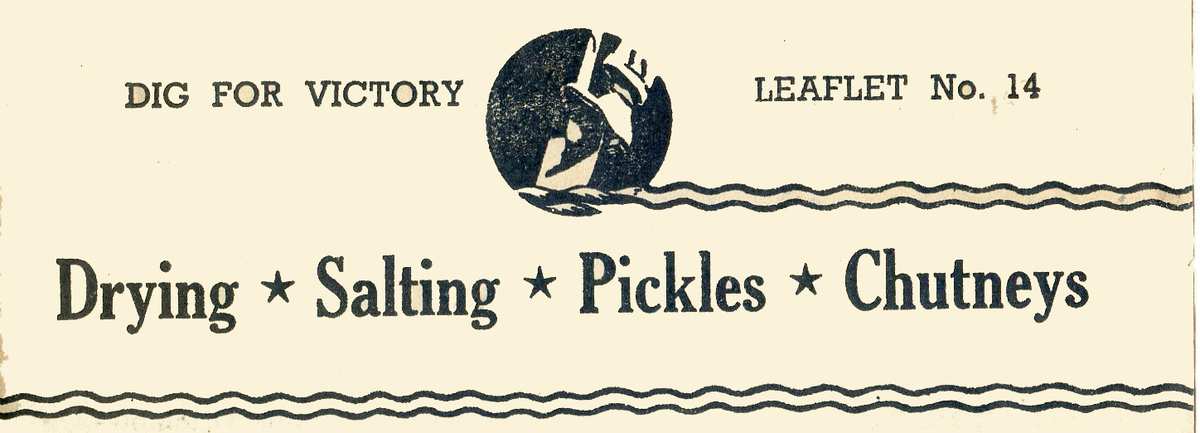 Drying * Salting * Pickles * Chutneys
Drying * Salting * Pickles * Chutneys
DIG FOR VICTORY LEAFLET No. 14 (Page 2 of 4)
SALTING
Salting was a common method of preserving meat and fish from Roman times, if not before. Salt was also used occasionally as a method of preserving eggs but the only vegetable that was commonly salted was the runner bean (aka string bean).
Since runner beans are extremely prolific, surpluses were common. In the days before freezing became common, salting was the only method of storing that summer surplus of string beans to use throughout the year.
As the leaflet says, the method is not suitable for other vegetables. It is possible to salt flat French beans but not the tubular shaped beans.
We did come across a suggestion for salting surplus cucumbers, a dismal failure in practice!
String beans can be successfully salted, but the method is not suitable for other vegetables. For every 3 or 4 lb. beans, use 1 lb. salt.
The beans should be young and fresh. They should be washed, dried and sliced in the usual way. Small beans may be used whole.
Large stoneware or glass containers should be used if possible, placing a good layer of salt at the bottom, then alternate layers of beans and salt, pressing down well, and finishing with a layer of salt.
After a few days, when the beans have shrunk, the jar is filled with more beans and salt, and covered with a cork painted over with melted paraffin wax or with a bladder or synthetic skin tied very securely. The salt draws moisture from the beans and forms a brine.
Failures with this method are often due to the use of too little salt, which may cause the beans to become slimy.
To use the beans, take them from the salt, wash thoroughly in several waters, then soak for 2 hours in warm water. Soaking for too long causes toughness. Cook in boiling water without salt until they are tender (25-35 minutes).


